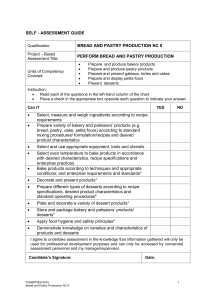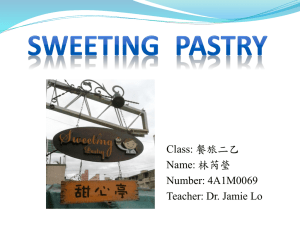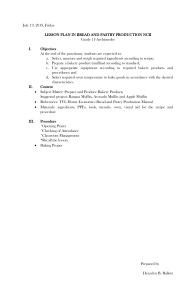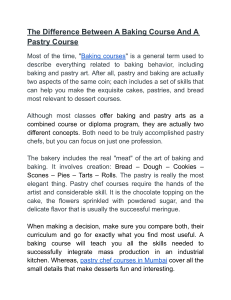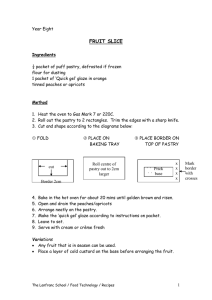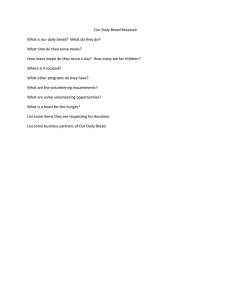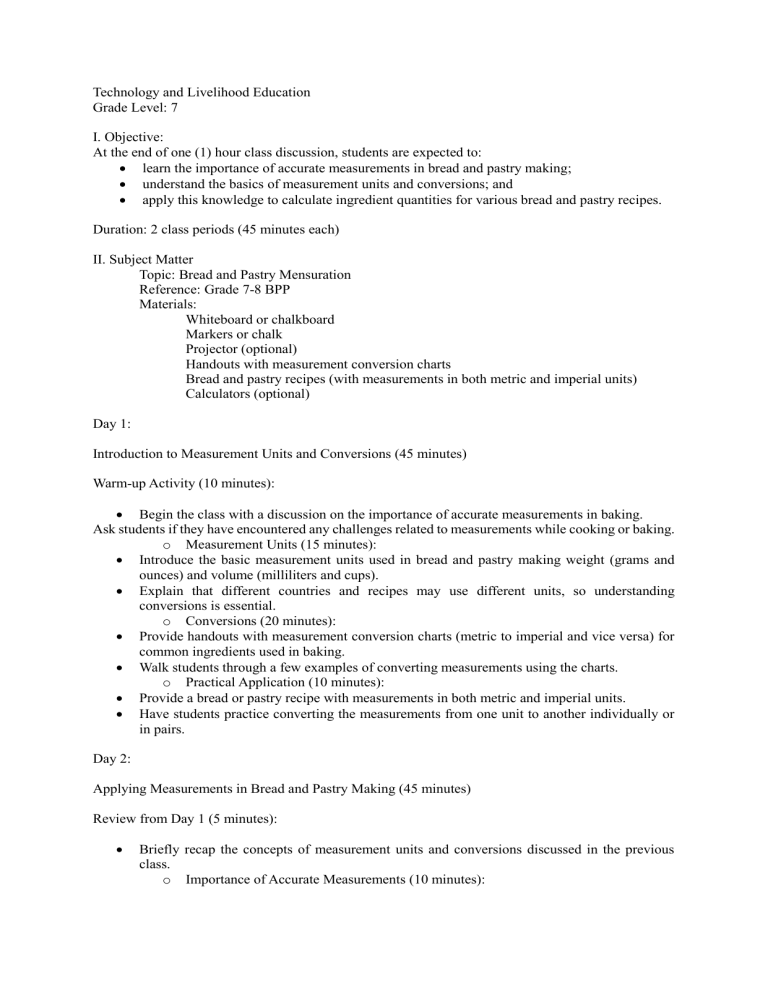
Technology and Livelihood Education Grade Level: 7 I. Objective: At the end of one (1) hour class discussion, students are expected to: learn the importance of accurate measurements in bread and pastry making; understand the basics of measurement units and conversions; and apply this knowledge to calculate ingredient quantities for various bread and pastry recipes. Duration: 2 class periods (45 minutes each) II. Subject Matter Topic: Bread and Pastry Mensuration Reference: Grade 7-8 BPP Materials: Whiteboard or chalkboard Markers or chalk Projector (optional) Handouts with measurement conversion charts Bread and pastry recipes (with measurements in both metric and imperial units) Calculators (optional) Day 1: Introduction to Measurement Units and Conversions (45 minutes) Warm-up Activity (10 minutes): Begin the class with a discussion on the importance of accurate measurements in baking. Ask students if they have encountered any challenges related to measurements while cooking or baking. o Measurement Units (15 minutes): Introduce the basic measurement units used in bread and pastry making weight (grams and ounces) and volume (milliliters and cups). Explain that different countries and recipes may use different units, so understanding conversions is essential. o Conversions (20 minutes): Provide handouts with measurement conversion charts (metric to imperial and vice versa) for common ingredients used in baking. Walk students through a few examples of converting measurements using the charts. o Practical Application (10 minutes): Provide a bread or pastry recipe with measurements in both metric and imperial units. Have students practice converting the measurements from one unit to another individually or in pairs. Day 2: Applying Measurements in Bread and Pastry Making (45 minutes) Review from Day 1 (5 minutes): Briefly recap the concepts of measurement units and conversions discussed in the previous class. o Importance of Accurate Measurements (10 minutes): Explain why accurate measurements are crucial in bread and pastry making. Emphasize that even small variations in measurements can significantly impact the final product. o Calculating Ingredient Quantities (20 minutes): Provide a new bread or pastry recipe and ask students to calculate the ingredient quantities based on a different serving size or yield. Guide them through the process and ensure they apply the correct conversions. o Hands-on Activity (10 minutes): Divide students into small groups and give each group a specific bread or pastry recipe with measurements in one unit only (metric or imperial). Have the students convert the measurements to the other unit using the conversion charts. o Conclusion (5 minutes): Recap and Reflection: Summarize the main points of the lesson, including measurement units, conversions, and their applications in bread and pastry making. Ask students to reflect on how understanding measurements will help them in their future baking endeavors. Q&A and Discussion: Allow students to ask any remaining questions or share their experiences with measurements in baking. Homework (Optional): Assign a few measurement conversion problems for students to solve at home, using various ingredients and measurements. Assessment: Active participation during class discussions and activities. Accuracy in converting measurements from one unit to another. Homework completion and performance in measurement conversion problems.
